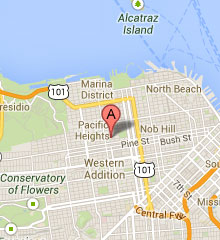For many women, “the menstrual cycle” is often compartmentalized to “that time of the month,” when in reality our bodies are undergoing changes throughout all times of the month. The menstrual cycle spans an average of 28 days, with our periods marking day 1 of a new cycle. It’s a common belief that hormonal fluctuations end when one’s period is over, however, it’s the opposite that’s true. After menstrual bleeding is over, the cycle, which is driven by fluctuations in hormones, continues until our next period, creating patterns in our moods and behaviors throughout the month. The menstrual cycle has been broken down into 4 phases:
- Phase 1 – Menstruation
- Phase 2 – Follicular phase, which is when the egg is prepared to be released from the ovary
- Phase 3 – Ovulation, which is when the egg drops from the ovary
- Phase 4 – Luteal phase, which is when the body prepares for pregnancy or prepares to shed the uterine lining
Tracking your menstrual cycle, and knowing which phase you’re in, can provide great insight into your mental, emotional, and physical needs, and how best to meet them.
Phase 1 – Menstruation
If you are currently not tracking your cycle, there is no better time to start than on your next period (Day 1). Menstruation typically lasts between 2-7 days. Leading up to menstruation, the body prepares for pregnancy by thickening the uterine lining; however, when there is no pregnancy, the body sheds the extra lining, which results in your period. At this time, estrogen levels are slightly elevated, and progesterone levels have dipped, which can cause feelings of sluggishness, both mentally and physically. You may also be experiencing cramps, and body aches, all of which will probably make you want to take it easy. Having your period marked on a calendar can help prioritize this much-needed downtime by limiting demanding commitments, and scheduling more practices of self-care such as yoga, a spa day, or a movie night. Whatever it is, the goal is to relax during this time.
Phase 2 – Follicular Phase
During the follicular phase (days 6-14), the body releases the FSH hormone to mature the egg for ovulation. Oestrogen, estrogen, and progesterone levels are also on the rise, which may lend to a nice energy boost. With this renewed energy, the follicular phase is typically a good time to reset and re-engage with some of the social commitments and gym routines you may have pushed aside during your period.
Phase 3 – Ovulation
Women tend to continue experiencing boosts in their energy, as well as their libido during ovulation (days 14-16). However, this is the only time sex will result in pregnancy, therefore it is especially important to track your cycle if you are trying to conceive. Those avoiding pregnancy may also find it helpful to know their ovulation window and either avoid sex during these days or take the appropriate contraceptive precautions.
Phase 4 – The Luteal Phase
The luteal phase (days 15-28), which falls between ovulation and the next period, is when the body begins to prepare for a new cycle. If pregnancy has not occurred, there will be dips in progesterone, resulting in lower energy levels and possibly mood swings / PMS. Again, this is a great time to go easy on yourself and lean into practices of self-love and care. Cook yourself some warm, nourishing meals, preferably those rich in iron and magnesium.
Knowledge as Self-Care
Knowing your body, and learning how to meet your needs is the ultimate way to show kindness and love to yourself. Tracking your period not only helps you make informed, self-aware decisions but can also help you notice any oddities in your cycle that may indicate a health issue. Having a catalog of your typical physical, mental, and emotional symptoms throughout the month can help you and your doctor parse out what is and isn’t normal/ideal for you. If you are overwhelmed by the thought of collecting this data, luckily there are several easy-to-use apps that can help you keep track of the various aspects of your cycle. If you’d like to learn more about tracking your cycle or have concerns about your current symptoms, do not hesitate to reach out to our providers.

